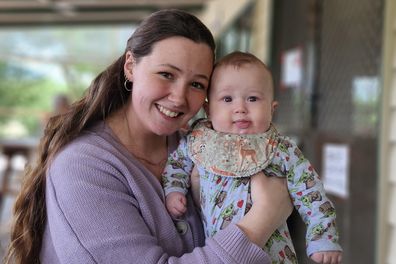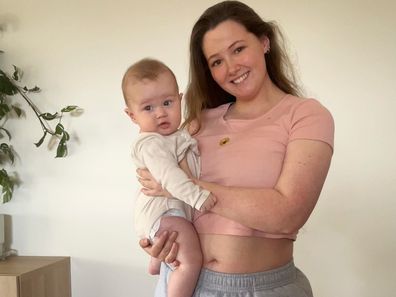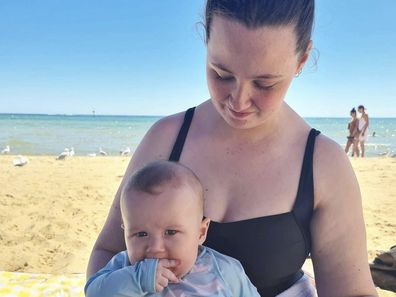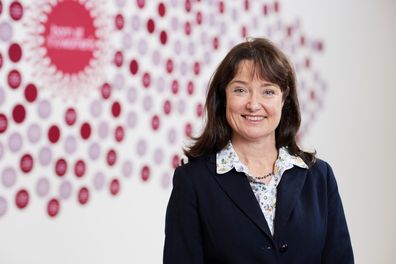'Life-changing': The unexpected treatment helping alleviate Chelsea's endometriosis pain
By Naomi White|
A new approach to treating endometriosis is helping women manage the crippling pain of the condition.
For C?helsea Knoll, it's been 'life changing'. The new mum to Joey, five months, is loving her new life.
But the 24-year-old from Melbourne doesn't take it for granted. Having been diagnosed with endometriosis at just 20, the Melbourne local says she was told 'several times' she would never be able to have a baby of her own.
READ MORE: Am I the only mum who doesn't shower every single day?

Endometriosis is a disease that causes tissue similar to the lining of the uterus to grow outside the uterus. It often affects the ovaries, fallopian tubes, and the outer surface of the uterus, but can also affect the bowel, bladder and other areas.
It can cause chronic pain, digestive problems and for some women, infertility.
Though she had 'perfect periods' up until she turned 19, things quickly turned, plunging Chelsea, like the one in nine Australian women estimated to have the condition, into a search for answers.
"One day I was just in extreme pain at work. I thought, is this my appendix? I ignored it, thought maybe it was just a bad, heavy period. But it got worse each month," she told 9Honey.
"I went to the hospital twice for pain, and then after six months I went to a gynaecologist and said 'something isn't right'."?
He agreed, and booked her in for laparoscopy surgery, which confirmed their suspicions. When shown photos of the endometriosis, Chelsea says it 'looked like 'spiderwebs' spun around her uterus, bowel and bladder.
READ MORE: Turia Pitt reveals her secret to staying 'positive'

"My stomach looked disfigured, because the endo was pulling my bowel down," she said.
?Although grateful her concerns were taken seriously, and acted on quickly, it returned and she underwent her second surgery, under a different gynecologist 12 months later.
"The endometriosis had come back worse than the first time, even though I'd been on medication between the first two surgeries," she said.
?After having this cleared out, she was given a referral for physiotherapy - which she describes as 'life-changing' in curbing the intense pain.
Reaching out after having her son, Chelsea was unsure how the physio, which works to strengthen her pelvic floor, would play into her treatment, and went in with few expectations.
But says it's made the biggest difference to her pain management to date.
READ MORE: Influencer breaks down after being 'slandered' for son's unusual name

"I wish I'd known about this five years ago, it would have helped so much if I knew how to take care of myself internally," she shared.
"The physio has 100 per cent helped. I haven't had a period yet since giving birth, but I get the phantom feeling of one. I barely get any pain at all, and where I do it's a dull ache, not a crippling pain."?
According to Associate Professor Helena Frawley, director of Allied Health Research at the Royal Women's Hospital, surgical management of endometriosis is not effective for every woman.
She told 9Honey that persistent pain doesn't correlate with the extent of endometriosis disease.
"For some women, surgical management is the only thing that will help, but it doesn't help everyone. Even those who proceed to laparoscopy, a third are found not to have endometriosis. Their symptoms and presentation can appear very similar, but no disease is found," she said.
READ MORE: ?Kit Harington opens up about preparing for baby number two

"But they experience the same persistent pain. It's not so much about the presence of the disease or severity, but what the impact is on that woman's quality of life.?"
Professor Frawley is researching how physio can help women like Chelsea, by investigating the role pelvic floor muscles play in persistent pelvic pain.
Assessing women before they undergo a laproscopy to see if their muscles are tender or tense, and how well they contract and relax, and again three and 12 months after their surgery, Helena hopes to learn more about how new therapies may be able to better target the pelvic floor to bring women greater relief.
Therapy plans may include modified exercises and strategies to address co-existing problems such as bladder or bowel issues.? Professor Frawley says these should be better promoted as a way to address pain.
"If a woman is diagnosed with endometriosis, it is often considered a medical problem that needs surgical or drug treatments to cure, and non-drug and non-surgical treatments are often overlooked, even when surgery and drugs are found not to help in some cases," she said.
READ MORE: Mum left gagging after horror discovery lurking in popular teething toy

?"There is emerging evidence that these non-drug and non-surgical ¨C or 'conservative therapies' ¨C do help many women with their pelvic pain and associated bladder and bowel problems.
We aim to find out more about this area of treatment so women have access to effective, low-risk and low-cost treatments."
Professor Frawley hopes to recruit more Melbourne-based women in the study, particularly those already on the waitlist for a laparoscopy.
March is endometriosis awareness month, to find out more visit Endometriosis Australia. ?
For a daily dose of 9Honey, subscribe to our newsletter here




